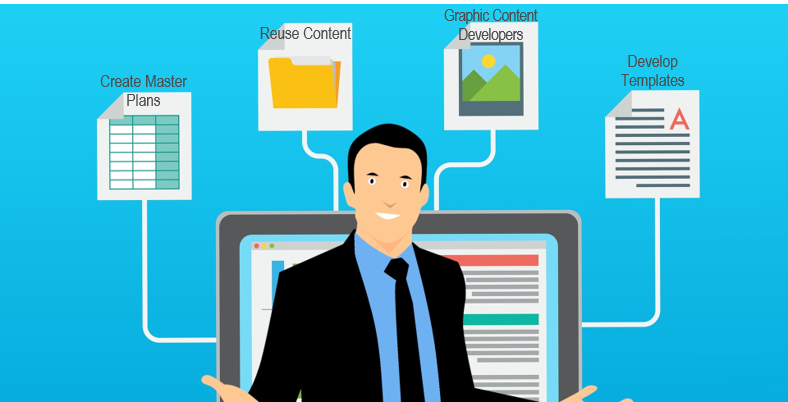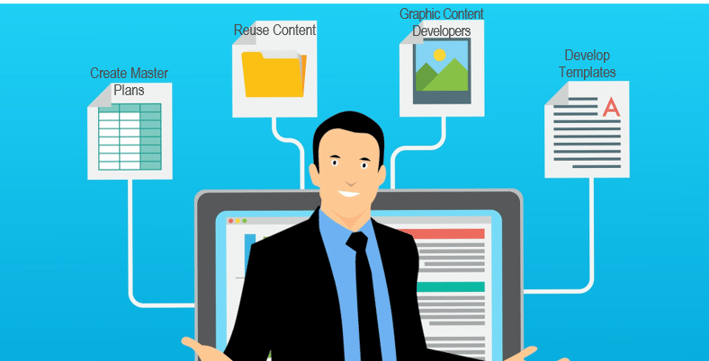2 min read
New OneTeam Features - February 2024
OneTeam users will notice a few new changes beginning February 2024. We released updates and new features to give our...
By: OneTeam on May 20, 2021 8:22:00 AM


As a business development professional are you starting from scratch each time you develop narrative or graphics for your government proposals?
While there is no such thing as a single government proposal template that works for all proposals, there are several things you can do to ensure that your team spends less time recreating work every time you submit a proposal.
Begin your proposal with templates and plans that can be customized and are easy to replicate and integrate into your proposal process. Working in concert with the capture manager, this will streamline the proposal development process and ensure accuracy in the proposal.
Here are a few quick ways to develop your own government proposal template and guide how to respond to government RFPs:
Your business development team can assemble a robust library of narrative and graphic content that can be updated and reused in proposal responses. It is much easier to edit and fill in existing content, rather than starting with a blank document. This is true for narrative and graphics.
Consider working with a graphic artist to develop good foundation graphics that are typically used in proposals such as
Ensure you have full rights to the graphics and the original files if you decide to use a graphics consultant. Also, decide which software application you want to use. If you want graphics created in PowerPoint, almost anyone on your team would have the skills to update words or make minor changes. If you choose Adobe Illustrator, it requires much more expertise to make even simple changes. Put the original source files of these graphics in your opportunity specific library where they are ready to updated quickly and easily for use in your proposals. You can easily change colors, font size, and names with a few clicks.
It is easy to create templates that fit your company’s style guide or follow the required RFP format. You can be assured that future documents based on the template will be accurate. Simply add proposal specifics (margins, font sizes and styles, page number, disclaimer statement, volume name and number, solicitation number, and logo) to a Microsoft Word template for a fully customized document in seconds. Here are a few quick ideas for creating a Word template that will save you HOURS of formatting work.
Your template is now ready to use! When writers or reviewers cut and paste or type new narrative in your document, they cannot introduce new styles, which saves you a lot of time later in the formatting and document finalization process.
Create master plans for quality, safety, security, management, recruiting and retention, compensation, risk management, and OCI to use in future proposals. Good content development takes many hours, and reusing content will be a huge timesaver for your team. To begin, look through your past proposals--especially those that were highly evaluated--and select the content you wish to reuse. Paste the content into a new Word document, then add the appropriate labels. Tag with keywords such as the customer’s name (NASA, MDA, or Army) and several words to describe the content (Risk Plan, Mitigation, Template, rating).
These master plans are a lifesaver! With each new proposal, review the past plan, make updates to the outline per requirements, and highlight specific information that needs to be validated and updated – such as number of personnel, retention rate, number of contracts, safety incidents, etc. Then assign the draft version for the appropriate expert to review and validate the highlighted sections and to develop new content for any new requirements.
Word has some good icons and smart graphics, but your proposals probably need more and better graphics than Word can provide. If you do not have a graphic artist or PowerPoint guru on staff, consider purchasing graphics from a professional graphics development website. There are several websites from which you can purchase customizable graphics (Billion Dollar Graphics, for example), many of which are designed with government proposals in mind. You should check any website to ensure you own the rights to reusing these graphics in your future proposals.
Read our free guide 5 Easy Ways to Increase Your Proposal Win Rate to use as a starting point for next proposal. Each proposal you submit will be unique, but they may also have a lot in common with other proposals. When you save time developing proposal content, you can focus time and energy ensuring capture management strategies, customer knowledge, and win themes are persuasive and position you to win!
Feb 23, 2024 by OneTeam
OneTeam users will notice a few new changes beginning February 2024. We released updates and new features to give our...
Nov 20, 2023 by Donna T. Hamby, CP.APMP
As November approaches each year, our thoughts turn to Thanksgiving with the celebrations of food, family, and...
Aug 23, 2023 by OneTeam
OneTeam users will notice a few new changes beginning August 18, 2023. We released updates and new features to give...